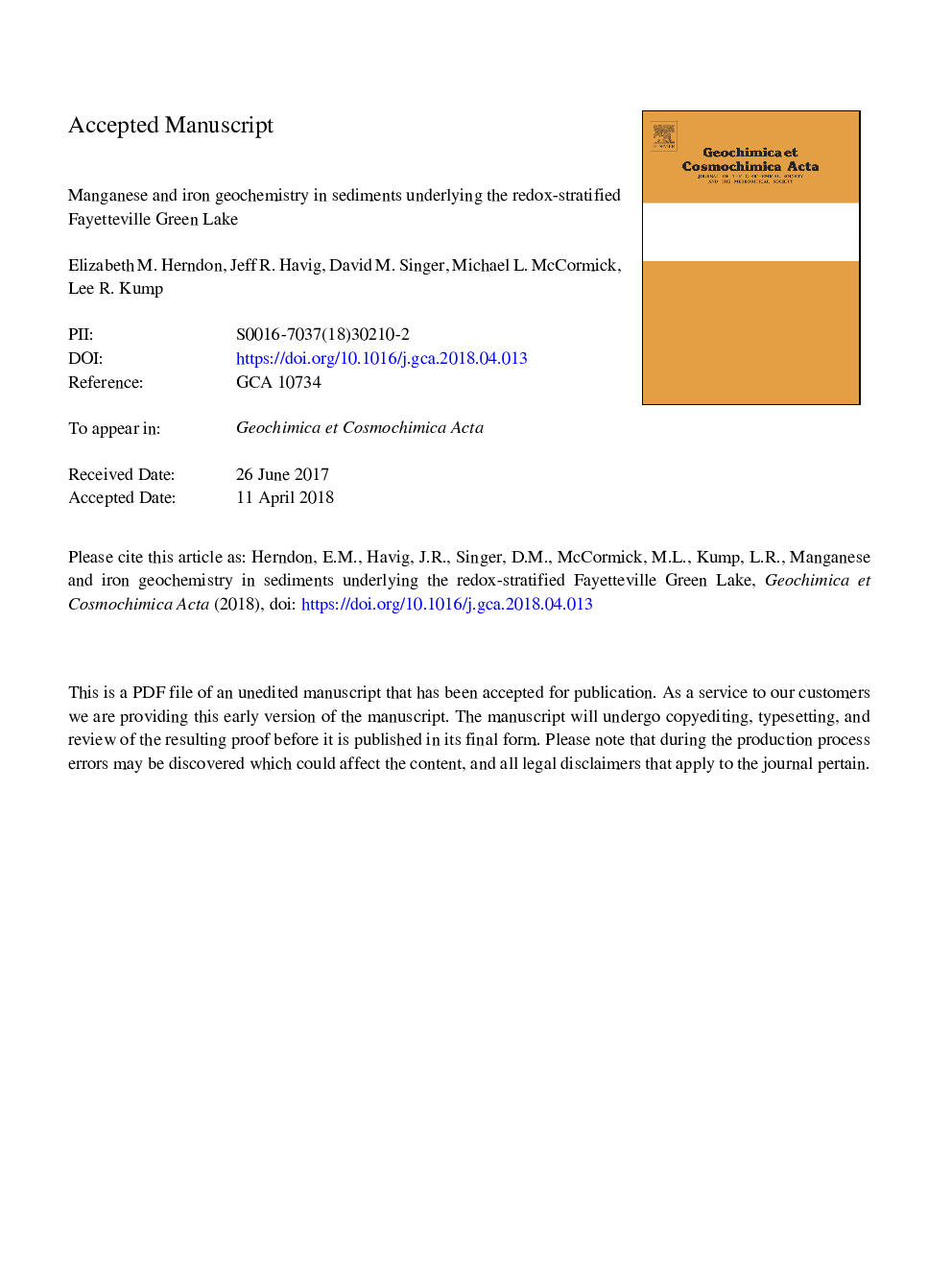| کد مقاله | کد نشریه | سال انتشار | مقاله انگلیسی | نسخه تمام متن |
|---|---|---|---|---|
| 8910746 | 1637926 | 2018 | 30 صفحه PDF | دانلود رایگان |
عنوان انگلیسی مقاله ISI
Manganese and iron geochemistry in sediments underlying the redox-stratified Fayetteville Green Lake
ترجمه فارسی عنوان
ژئوشیمی معدن منگنز و آهن در رسوبات زیرزمینی دریاچه سبز فایتوویل سبب شده است
دانلود مقاله + سفارش ترجمه
دانلود مقاله ISI انگلیسی
رایگان برای ایرانیان
موضوعات مرتبط
مهندسی و علوم پایه
علوم زمین و سیارات
ژئوشیمی و پترولوژی
چکیده انگلیسی
Manganese and iron are redox-sensitive elements that yield clues about biogeochemistry and redox conditions both in modern environments and in the geologic past. Here, we investigated Mn and Fe-bearing minerals preserved in basin sediments underlying Fayetteville Green Lake, a redox-stratified lake that serves as a geochemical analogue for Paleoproterozoic oceans. Synchrotron-source microprobe techniques (μXRF, μXANES, and μXRD) and bulk geochemical analyses were used to examine the microscale distribution and speciation of Mn, Fe, and S as a function of depth in the top 48â¯cm of anoxic lake sediments. Manganese was primarily associated with calcite grains as a manganese-rich carbonate that precipitated in the chemocline of the water column and settled through the euxinic basin to collect in lake sediments. Iron was preserved in framboidal iron sulfides that precipitated in euxinic bottom waters and underwent transformation to pyrite and marcasite in the sediments. Previous studies attribute the formation of manganese-rich carbonates to the diagenetic alteration of manganese oxides deposited in basins underlying oxygenated water. Our study challenges this paradigm by providing evidence that Mn-bearing carbonates form in the water column and accumulate in sediments below anoxic waters. Consequently, manganoan carbonates preserved in the rock record do not necessarily denote the presence of oxygenated bottom waters in ocean basins.
ناشر
Database: Elsevier - ScienceDirect (ساینس دایرکت)
Journal: Geochimica et Cosmochimica Acta - Volume 231, 15 June 2018, Pages 50-63
Journal: Geochimica et Cosmochimica Acta - Volume 231, 15 June 2018, Pages 50-63
نویسندگان
Elizabeth M. Herndon, Jeff R. Havig, David M. Singer, Michael L. McCormick, Lee R. Kump,
